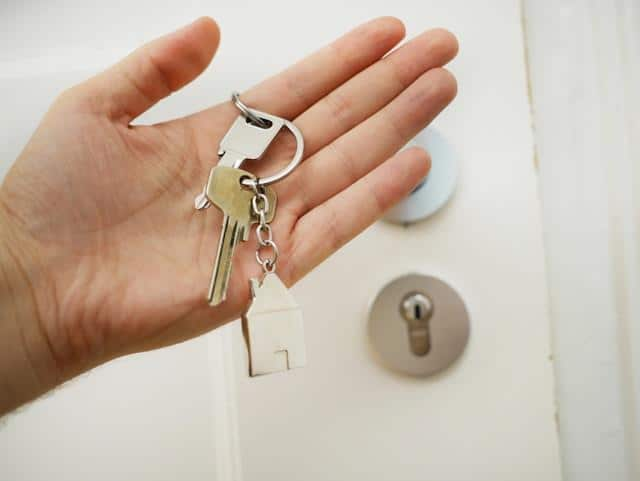Join our live online group lessons starting September 1! Sign up until August 22 here.
Days
Hours
Minutes
Join our live online group lessons starting September 1! Sign up until August 22 here.

Want to own a piece of Serbia? Good news — it’s totally possible! And no, you don’t have to marry a local to make it happen. Instead, you can buy property in Serbia as an expat.
If you’re new to the process, it might sound intimidating — legal hoops, foreign regulations, Cyrillic paperwork? Yikes. But don’t worry. We’re here to walk you through it all, step by step, so you can become a proud property owner in Serbia with as little stress (and as much rakija?) as possible. Strap in!
Disclaimer: This guide isn’t legal advice. Always talk to a licensed lawyer in Serbia before making any property decisions.
The short answer is — yes, you can. There’s a caveat, though.
When it comes to eligibility, reciprocity is the name of the game. In short, if Serbian citizens can buy property (nekretnine) in your country, you can do the same in Serbia. Check this page for details.
If your country isn’t covered, there’s still a way in. You can set up a Serbian company and buy through it.
In short, foreigners can buy residential property — like houses or apartments — but not agricultural land.
There are some exceptions, though. EU citizens who’ve held permanent residency in Serbia for at least 10 years and have a registered agricultural holding can purchase agrarian land.
Another workaround? Marrying a local. Foreigners married to Serbian citizens can buy any property, including agricultural land.
One of the biggest reasons people invest in property here? A clear path to residency. Buying property in Serbia makes you eligible for a one-year residence permit, which you can renew annually. Stick around long enough, and you can even apply for permanent residency. Pretty neat, right?
Plus, property prices in Serbia are still relatively affordable — especially compared to much of Europe — and the cost of living won’t drain your wallet either. So, if you’re thinking long-term, real estate might be your golden ticket.
Ready to dive into the Serbian property market? Let’s go!
It’s time for house hunting! Check out platforms like Halo oglasi, Nekretnine.rs, and 4zida.rs. Most listings are in Serbian, but browser translation tools can help — or better yet, work with a local agent who can guide you through the options.
Agents usually charge 2% to 4% of the purchase price, often split between buyer and seller. Some may quote a flat fee instead, so ask upfront.
When something catches your eye, book a viewing. If you’re buying from abroad, your agent or lawyer can often visit the property, take photos, or do a video tour.
Next, you’ll want to lawyer up. Legal counsel is key in such hefty purchases, so choose wisely.
Since you’ll want someone reputable and experienced, word of mouth is your best bet. In other words, ask around the expat community or any local friends.
Throughout the process, your lawyer (advokat) will review the paperwork, help with contracts, warn you about any red flags, and much more.

Suss out potential legal issues before making any payments or signing contracts. Sadly, many properties in Serbia come with legal hiccups.
For instance, some apartments and houses lack proper ownership because of a dispute between family members. Turns out, family drama isn’t just for slavas.
Amazingly, many properties aren’t even registered in the Real Estate Cadastre (Katastar). Such properties are known as divlja gradnja (wild construction).
Obviously, any of these can give you a headache down the line. If you’d rather be safe than sorry, access the Cadastre, or ideally, have your lawyer do it and check all the paperwork.
If everything checks out, it’s time to talk numbers. Negotiating is normal in Serbia, so don’t hesitate to offer a little below the asking price.
Aside from the price, you can also discuss payment deadlines, what stays in the property (appliances, furniture, etc.), the move-in date, and so on.
First, apply for a tax number (PIB) at the Tax Administration (Poreska uprava). Of course, your lawyer can help with this.
With that done, you’re ready to open a bank account. To do that, visit a bank of your choice and bring your passport and PIB.
Finally, you get to seal the deal at a notary’s office.
First, you (or your lawyer) will send the necessary paperwork to the notary. Once they’ve approved it, they’ll set a date for the signing and let you know exactly what to bring.
Just a heads-up: notary fees are paid by the buyer, and the exact amount depends on the value of the property.
Also, the contract has to be in Serbian. If your Serbian stops at dobar dan and domaća kafa, molim, don’t worry! You can request a bilingual version of the contract. You’ll also need a court-certified translator and two bilingual witnesses at the signing.
Once you sign the contract, get ready to pay up. Funds are typically transferred from your Serbian bank account to the seller’s account.
If you’re sending money from abroad, your bank might ask for documents showing the source of funds (e.g., savings, inheritance, loan) and proof of the purchase. To avoid delays, check with your bank in advance.
Next up is the 2.5% property transfer tax. After the notary completes their part, they submit the agreement to the Tax Administration.
As the buyer, you’ll receive a decision and have 15 days to pay. Your lawyer or notary will guide you through this step and ensure nothing falls through the cracks.
At last, it’s time to make it official by registering the property in your name at the Real Estate Cadastre.
In most cases, the notary takes care of this right after the signing. Still, it’s a good idea to double-check — just in case.
Once it’s all processed, you’ll get a new title deed with your name on it.

There’s nothing quite like owning a little slice of land — and now, you can do just that right here in the heart of the Balkans. With this guide, you’re ready to buy property in Serbia and maybe even kick off a brand-new chapter in the land of rakija and ćevapi.
And hey — while you’re investing in real estate, why not invest in your Serbian too? Our group lessons are your secret weapon for chatting, laughing, and blending in with zero stress. Join us and start speaking Serbian today!